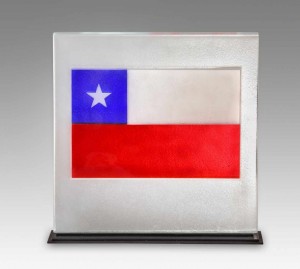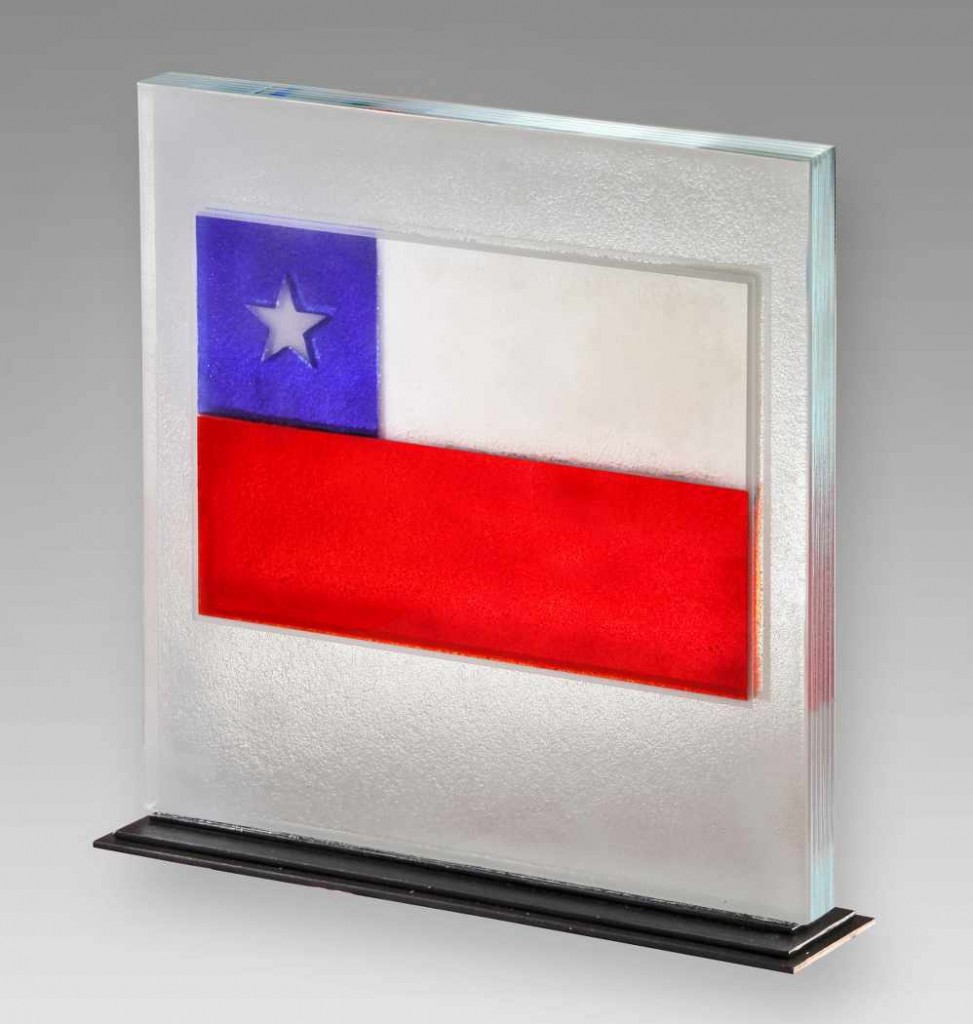 Return the 2011 summary
Return the 2011 summary
 Work available
Work available
Chile
2011
50 x 50 x 3,6 cm | 28 kg
Fused multilayer glass with inclusion of pigments
![]()
Adopted in 1817, the flag of Chile appeared in the early days of the country's independence.
Chile was then colonized by the Spanish. The upheavals in the United States of America and Europe gave ideas to Creoles, people born in South America but of foreign origin.
Thus, on September 18, 1810, learning of the imprisonment of the King of Spain Ferdinand VII by Napoleon I, a group of Chileans attempted to establish independence: the natural son of an Irishman, Bernardo O'Higgins, was brought in power.
But the Spaniards, once rid of Napoleon, returned to oust the civil junta. Defeated in October 1814, the junta took its revenge at the Battle of Chacabuco on February 12, 1817. The following year, on the same date, the country's independence was proclaimed.
Designed by the American Charles Wood, who served as a volunteer in the Chilean army, this flag is clearly inspired by that of the United States. It is generally considered that white represents the snow of the Andean peaks, blue the sky, and red all those who gave their lives in defense of the homeland.
The star symbolizes progress and civic spirit.
Click on the images to zoom
Official name: Republic of Chile
Continent: America | Capital: Santiago
Area: 756,950 km2
Population (2010): 16 746 491 habitants
Official language: Spanish | Currency: chilean peso
Border countries: Argentina, Bolivia, Peru
National holiday: September 18
Motto: By reason or by force
Member of the United Nations: 24 October 1945
Member of the UNESCO: July 7, 1953


